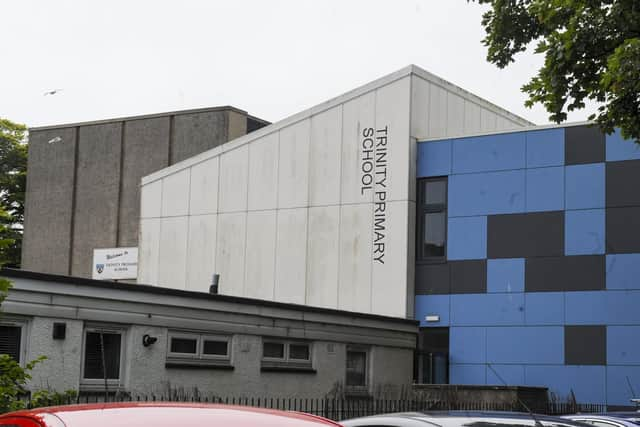RAAC schools: Cost of making Edinburgh schools safe estimated at up to £50m, city council says
The cost of making Edinburgh schools which were built using dangerous crumbling concrete safe has been estimated at up to £50 million.
It comes after reinforced autoclaved aerated concrete (RAAC) was found in eight city schools and a further four council-owned properties following extensive surveys.
Advertisement
Hide AdAdvertisement
Hide AdSafety concerns over the lightweight concrete sparked a UK-wide response last year when hundreds of schools were closed or partially closed.


But action came after years of warnings from experts who for long have said the cheap material, used commonly in the construction of public buildings up to the 1980s, was now life-expired and liable to suddenly collapsing.
Now after totting up the total bill for remedial works, council bosses estimate these could set the authority back £50m. It is expected around £15m of this will need to be spent in the next three years, with up to £36m extra set to be budgeted for long-term costs.
The amount spent addressing the crisis in Edinburgh to date is just under £2m. The figures were contained in a report going to the finance and resources committee, which included an update on the situation in the buildings affected.
“The estimate includes allowance for ongoing inspections, continuation of scaffolding hire where necessary, any temporary remedial measures such as propping of RAAC panels and further survey work which will be carried out in line with structural engineering guidance,” the report said.
“The extent of surveying across the estate has been significant and carried out at pace.”
Some pupils at Trinity have been moved into temporary classroom units due to a number of classroom ceilings containing RAAC. The school will require a roof replacement “on the entire area impacted by RAAC”.
Advertisement
Hide AdAdvertisement
Hide AdThe report states: “This work has been split into two stages with the priority being the classrooms roof due to the ongoing cost of the decant accommodation and the technical complexities of the second stage.”
Work on the first phase is scheduled to start “early 2024” with completion estimated for this autumn. Hire costs are estimated at £3.8m.
Portakabin classrooms have also been required for some learners at Cramond Primary where parts of the school have been closed off. The area covered by RAAC needs a roof replacement with works due to commence “early 2024” to be completed by autumn. Including classroom hire, the cost will be around £2.9m.
One of the worst impacted in terms of remediation costs is Fox Covert/St Andrew’s Primary School. The school gym hall and dining hall remain closed, but “are expected to re-open early in 2024” the report states.The cost of replacing the RAAC in the longer term are “more complex than the other impacted buildings”.Long-term costs associated with RAAC are estimated at between £20m and £30m.
Initial mitigation measures required at Colinton Primary were “minimal and implemented quickly” with no impact on school operation. Longer term, plans will be drawn up to replace RAAC roofs “with a phased approach” at an estimated cost of £2m.
Crumbling concrete at Currie High School was discovered in the old gym block, assembly hall and an art classroom, which all remain closed.
Comments
Want to join the conversation? Please or to comment on this article.